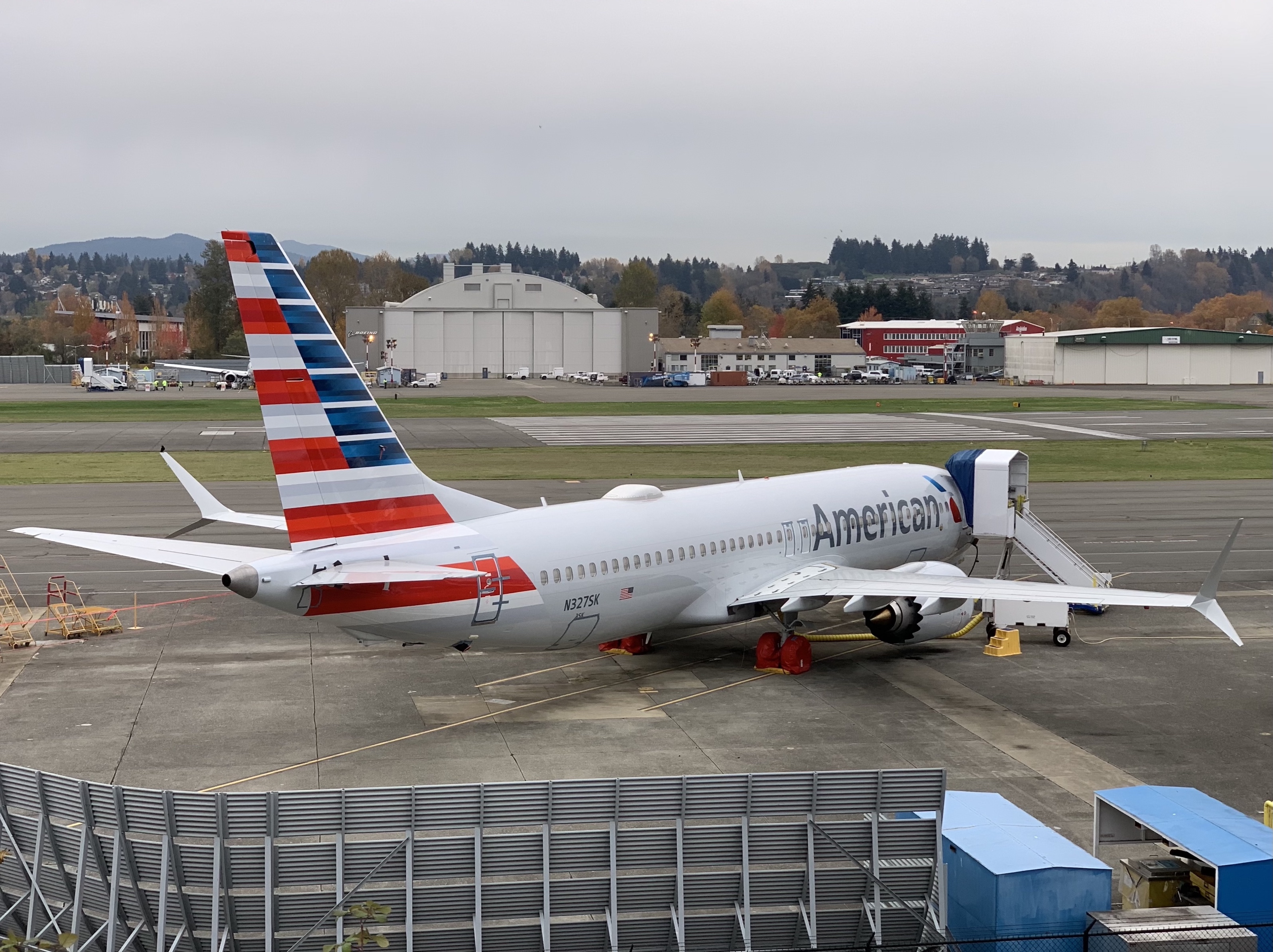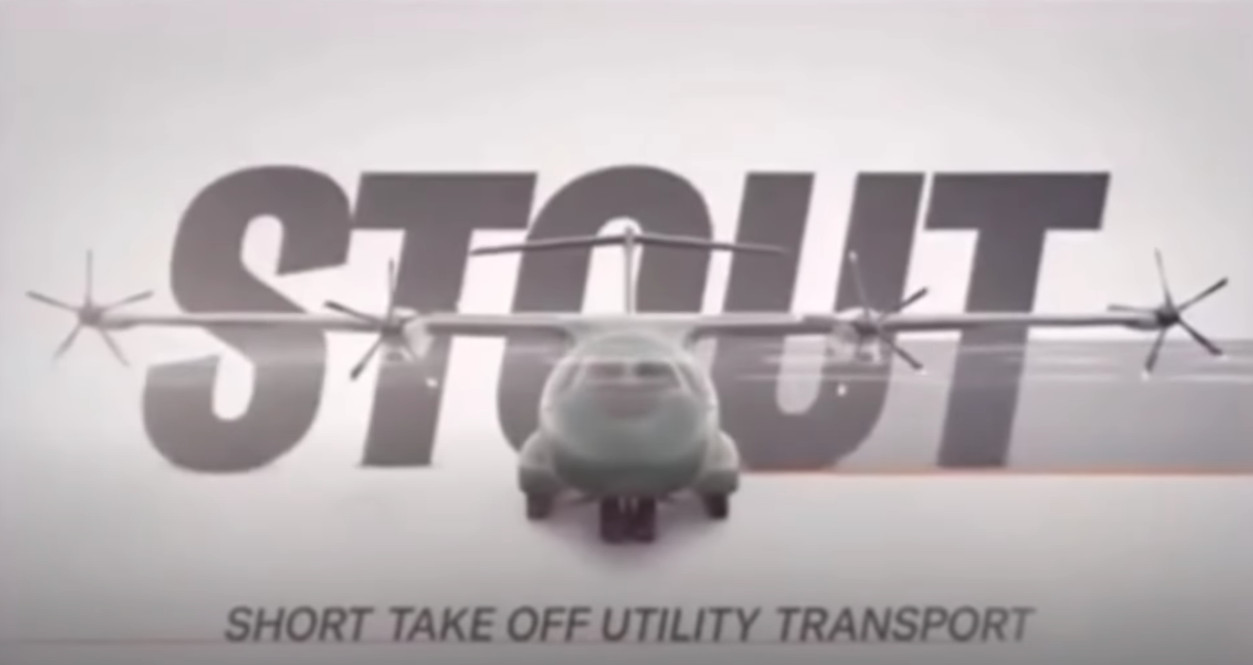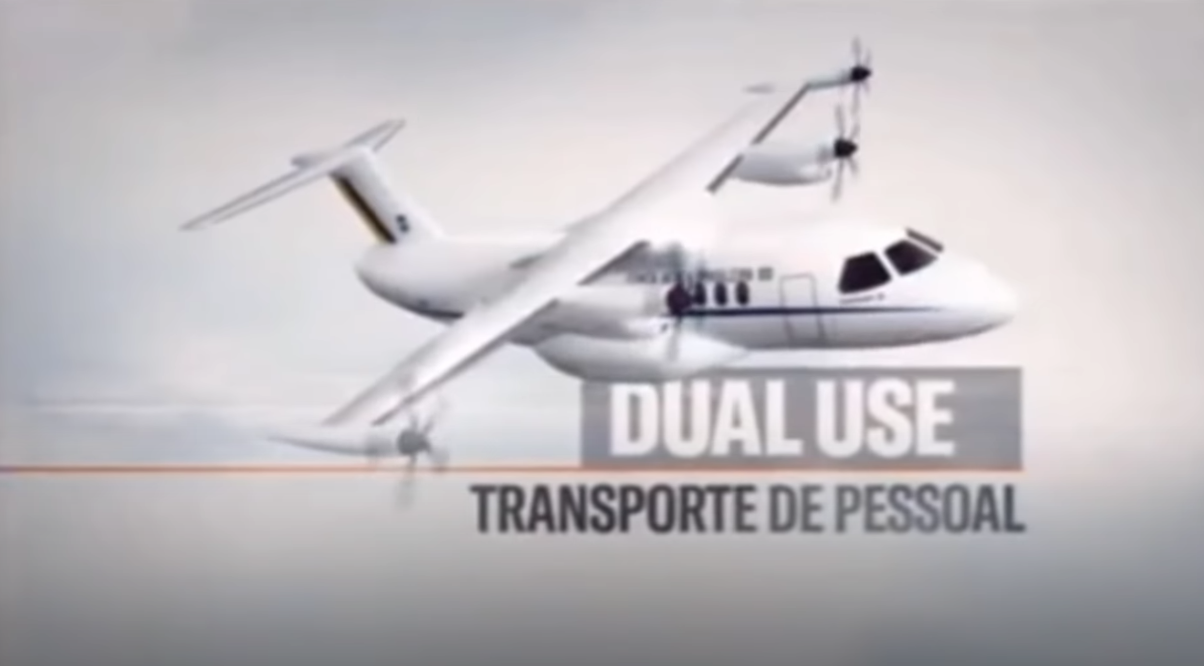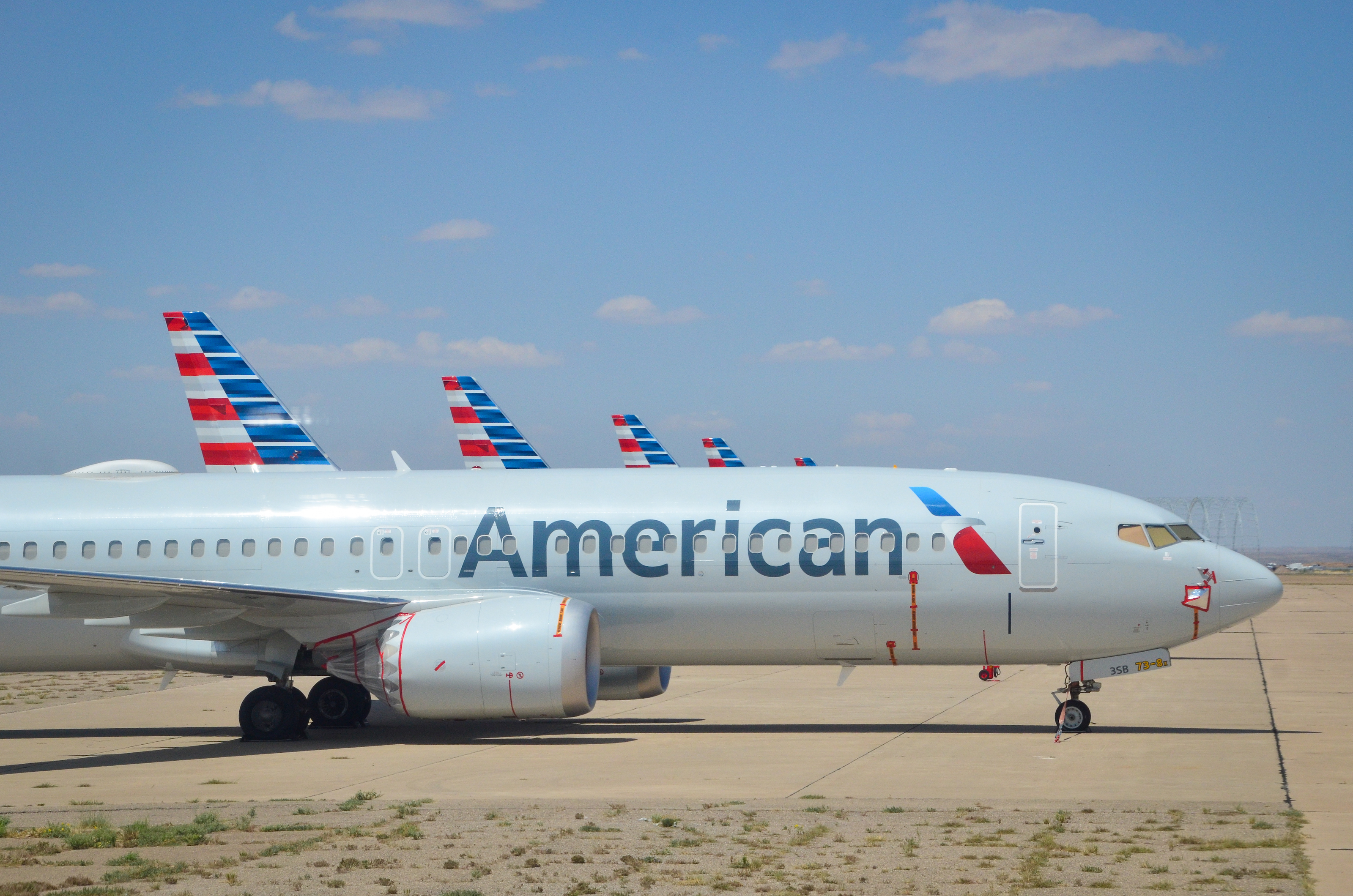American will lead 737 Max service return
The U.S. grounding of the Boeing 737 Max will likely be over before the end of this week. A senior safety official at one of the U.S. airlines that operates the Max and has been closely involved in the recertification process tells The Air Current that the FAA’s Airworthiness Directive is expected to be finalized as early as Wednesday, Nov. 18, some 616 days after the fleet was grounded by the U.S. regulator back in March 2019.
If you had to visualize this process, after the last 20 months of intense scrutiny we’re into the last two paragraphs of this story from February when Steve Dickson outlined the final steps in the ungrounding saga. The U.S. clearance is the first in the global re-certification that will see Canada, Brazil, European Union and other global regulators following in the days and months to come.
Related: FAA Administrator outlines final gantlet to return 737 Max to service
American Airlines will lead the return to service. So far, only American has a tentative date for Max’s re-entry. The airline will begin flying the jet between LaGuardia and Miami starting on Dec. 29. NBC News’ Tom Costello in December 2019 was given a look inside the process that has been unfolding in Tulsa, Okla. to keep the fleet of 24 as fresh as possible for that eventual return.

Despite moves to defer some Max deliveries, American has a distinct financial benefit for adding more to its fleet. At an internal event in October, AA’s CFO Derek Kerr told employees that as part of its 2019 Max settlement with Boeing that “every aircraft we take is going to be a significantly cash positive impact to the airline, so we want to take those aircraft as we go forward.”
In preparation for that return. American is holding a Nov. 18 internal presentation with its pilot and flight attendant corps and plans to begin formally retraining its 737 crews on the updated systems and procedures starting on Dec. 2, an airline spokeswoman confirmed. The Allied Pilots Association anticipates all its 737 crews will be retrained by the end of March 2021.
The airline safety official cautioned that the training timelines across all the U.S. airlines are subject to further approval, as each airline’s FAA Certificate Management Office (CMO) has to sign off on the carrier-specific details.
In the run-up to Dec. 29, American plans to operate the Max on flights for employees as part of its own internal trust rebuilding process and plans static displays for corporate customers and travel agencies in LaGuardia, Miami and Dallas/Ft. Worth.
The American spokeswoman said all its plans are dependent on the FAA’s approval schedule.
United Airlines hasn’t yet said when the Max will return to active status in its fleet, however chief commercial officer Andrew Nocella ruled out a 2020 reactivation. “Likely sometime next year based on the schedule here from the FAA and Boeing,” he said in October. Southwest Airlines, the largest operator of the Max, will take considerably longer to return the aircraft to operational status. The carrier intends to re-train all of its 9,000-plus pilots first before the aircraft resumes revenue operations.
Take $30 off a new annual subscriptionEmbraer’s other turboprop study
Just before the Christmas holiday in 2019, Embraer and the Força Aérea Brasileira (Brazilian Air Force) tapped the plane maker to study a hybrid-electric light military transport for use on the rugged unprepared airfields in the Amazon. At the time of the MoU, Aviation Week’s Steve Trimble noted the project would’ve been the first new aircraft to come to the fore under what was to be the remaining standalone Embraer after the divestment of its commercial unit to Boeing. The partnership fell apart a few months later.
There have been few details since, however. On Friday, Nov. 13 an 82-second video was shown at a seminar held by the FAB of what’s now being called Embraer’s STOUT or the Short Take Off Utility Transport. The video shows a fuselage design that resembles a miniaturized version of the KC-390 with a straight wing, with two gas-powered turboprops and two wingtip-mounted electric motors. The video, which looks and sounds like it was shot on a cell phone, suggests the left turboprop supplies electricity for the right motor and vice versa.
Related: The end of Boeing Brasil Commercial and the re-birth of Embraer into the unknown
The design is roughly the length of the out-of-production EMB-120 Brasilia, and touts a 1,310 nautical mile range with three tons of cargo. Wider than the 30-seat twin turboprop Brasilia (as illustrated by the roll-on, roll-off loading of a pickup truck from the rear cargo door), the STOUT — with a similar cabin length — looks as if it could seat up to 40 passengers in a conventional transport configuration.


Embraer confirmed the video’s authenticity and said it was part of the joint study “whose objective was the design of a new light military transport aircraft that meets the needs of Brazilian Armed Forces.”
Those familiar with the design said that the study has not resulted in any commitment to develop the STOUT for the FAB, noting that the first existence of the C-390 was envisioned as a high-wing E190, and later evolved to its clean sheet design in 2007. The program wasn’t formally contracted by the FAB until 2009 and didn’t fly until 2015. The STOUT may be a long way off.
Related: Embraer can survive solo, but outlook mixed after Boeing breakup
Yet, so is Embraer’s other turboprop. The company is in the middle of seeking partners for the notional “E3”, a 70 to 100 seat conventional turboprop aircraft with an E2-sized fuselage that it said recently wouldn’t be ready before 2027. As Embraer charts its course into the decade, a hybrid electric turboprop has far more disruptive potential than a larger conventional turboprop.
In the words of Embraer’s vice president of marketing for its commercial aircraft unit, Rodrigo Silva e Souza, told the Airfinance Journal podcast: “We also see a lot of potential opportunities on the smaller aircraft, considering new technologies in terms of propulsion, especially. We believe new, more sustainable solutions could be made available in the class, say, below 50 seats. Those technologies tend to become viable in smaller aircraft, and therefore opening other opportunities for Embraer to enlarge the portfolio.”
At the intersection of Apple strategy and electric propulsion
In 2018, TAC charted the parallels between slow 777X sales and the same challenge faced by Apple with slumping iPhone sales. We revisit the intersection again – not in relation to the 777X — but in relation to achieving major leaps in performance and efficiency. Apple formally commercialized its new self-designed M1 chip last week, with plans to insert the chip into two of its laptops and the Mac Mini.
Related: Apple iPhone and Boeing 777X have the same problem
By Apple’s claims, its new chip significantly improves the energy consumption of the integrated processor, memory and graphics. The size of the laptop’s battery is unchanged, but the engine that it feeds is radically more efficient. By controlling its own strategic hardware, Apple manages the complexity and integration inside its own operations, rather than at a distance with a vendor (with its own business interests) like Intel.
So what does any of this have to do with aviation? Much of the endurance shortfall of electric aviation (vs. traditional gas-powered propulsion) has focused on the batteries and their limited energy density. But have we all been looking at this the wrong way?

There’s a crossover parallel that’s instructive as we watch the developments toward commercialized electric flying. Apple didn’t go out and design its own battery, it went out and re-designed the processor (propulsion system) to be more efficient. In essence, strategic model is as much a differentiator as technology — and one makes the other possible. It’s also reminiscent of an earlier age in aviation. Remember, a century ago, Boeing and Pratt & Whitney were under the same roof. Yes, batteries need to improve their energy density, but how the overall electrical system is integrated into the aircraft to harness that energy is just as important.
Related: Electric flying advances to the mainstream as Tecnam joins the race
Tecnam is partnering with its European compatriot Rolls-Royce on its P-VOLT. Eviation is using a combination of Rolls-Royce and MagniX on its nine-seat Alice. Yet the alliance with MagniX goes one big step farther. MagniX is wholly owned by Clermont Aerospace, which itself is a unit of New Zealand-born billionaire Richard Chandler’s Clermont Group. In 2019, Chandler’s Clermont took a 70% stake in Eviation, making MagniX CEO Roei Ganzarski both Clermont Aerospace’s and Eviation’s chairman.
“When you do that, what we’ve found is that there’s a huge advantage of being able to do both airframe and propulsion system, those are the two critical elements,” said Ganzarski in an interview last year. “You want to be able to make sure…they’re optimized for each other and that there’s a real tight knit relationship to make sure that one doesn’t slow the other down, and in fact optimizes and accelerates the other.”
—
Also, some recommended reading: Ben Thompson, the mind behind Stratechery, digs deep into the evolution of Apple’s hardware strategy. In an age of commoditization, the integration of hardware and software is Apple’s differentiation. Harvard Business Review in its November-December issue deeply explores How Apple Is Organized for Innovation. “Apple is not a company where general managers oversee managers; rather, it is a company where experts lead experts.” Also, former Microsoft executive Steven Sinofsky had extended Twitter thread on the strategy and patience required to bring the Silicon strategy to life. (It took two years – an eternity in tech, a blink of an eye in aerospace)
More in the air
Royal Aeronautical Society – Decarbonising Aviation: The next phase Dr Sandra Bour-Schaeffer
Bloomberg – Korean Air aims for top-10 world ranking with Asiana deal
Flightglobal – How practical is a Chinese and US aerospace breakup over Taiwan?
Reuters – Southwest CEO says airline is not looking to expand its fleet
Aviation International News – Emirates Retires First A380 from Fleet
Flightglobal – PC-24 approved for 10-seat commuter operations
Subscribe to Continue Reading
Our award-winning aerospace reporting combines the highest standards of journalism with the level of technical detail and rigor expected by a sophisticated industry audience.
- Exclusive reporting and analysis on the strategy and technology of flying
- Full access to our archive of industry intelligence
- We respect your time; everything we publish earns your attention

